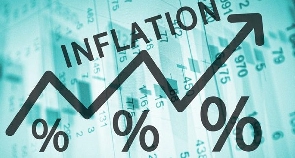 Consumer inflation at the end of 2020 reversed back into a double digit
Consumer inflation at the end of 2020 reversed back into a double digit
Consumer inflation at the end of 2020 reversed back into a double digit, closing the year at 10.4 percent, data from the Ghana Statistical Service (GSS) has shown.
This reversal from the single digit 9.8 percent achieved in November 2020 was largely due to the rise in the inflation for the food items during the Christmas season.
The combined consumer price index (CPI) measures the change over time in the general price level of goods and services that households acquire for the purpose of consumption.
The data reveals that inflation for the food sub-group increased from 11.7 percent in November 2020 to 14.1 percent in December 2020. Food contributed 59.1 percent to the total inflation. This is the highest contribution recorded since April 2020 when COVID-19 started to affect Ghana.
Government Statistician, Professor Samuel Kobina Annim explained that the increased rate of food inflation is the predominant reason for increased overall inflation, as without this increase, year-on-year inflation would have been lower than last month.
Within the Food Division, Vegetables 24.2 percent was the Subclass with the highest rate of inflation, followed by Fish and other Seafood 22.9 percent.
Overall month-on- month Food inflation was 1.5 percent, being 1.2 percentage point higher than last month and higher than both on average in 2020 and in the same month last year.
Similar to Food, Alcoholic Beverages and Tabacco saw a relatively high month-on-month inflation (0.9 percent).
However, in contrast to Food inflation, Non-Food inflation decreased, from to 7.7 percent this month as compared to 8.3 percent last month and 8.5 percent on average in 2020.
“After a few months of high inflation for Transport, December saw low inflation for Transport at 4.8 percent year-on-year and 0.1 percent month-on-month as compared to an average 7.8 percent year-on-year and 0.4 percent month-on-month for 2020,” Prof. Annim said.